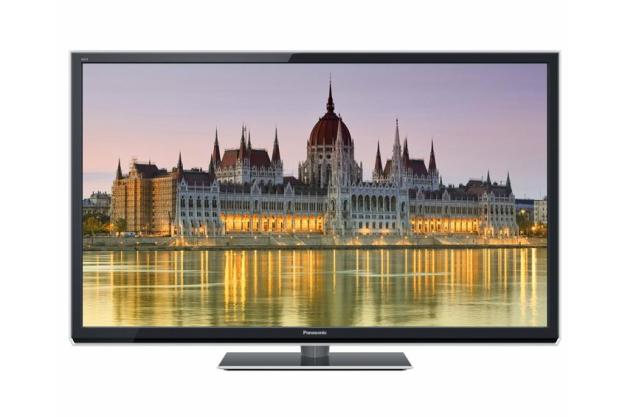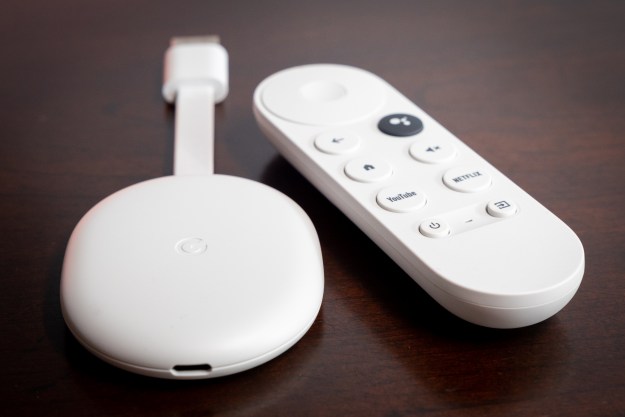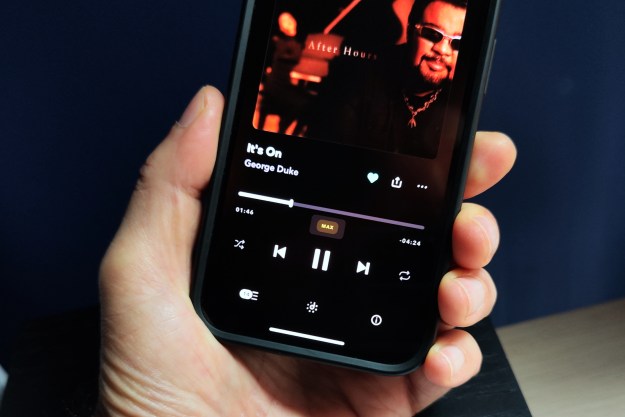
- Outstanding black level and contrast performance
- Great brightness
- Nearly perfect color
- Naturally smooth motion
- Excellent Internet portal (Viera Connect)
- Black levels suffer in bright rooms
- Limited HDMI connections
- High power consumption, high heat output
- Calibration takes a while
Panasonic Viera ST50 series information: This review is based on our hands-on experience with the 55-inch TC-P55ST50 TV. However, our observations also apply to the other models in the ST50 series. According to Panasonic, the sets differ only in dimension and weight and offer identical features and performance.
|
Models in Panasonic ST50 Series |
Size |
| Panasonic Viera TC-P50ST50 | 50 inches |
| Panasonic Viera TC-P55ST50 (reviewed) | 55 inches |
| Panasonic Viera TC-P60ST50 | 60 inches |
| Panasonic Viera TC-P65ST50 | 65 inches |
Though Panasonic showed it was very much invested in LED TV at CES 2012, most of the consumer industry recognizes that the company hitched its wagon to plasma technology a long time ago. As a leader in plasma TV, we tend to count on Panasonic to come up with new, exciting developments on this aging technology, lest it be brushed aside by the allure of micro-thin, feather-light LED-backlit TVs (even if they do suffer from inferior picture quality). But where do you go with plasma TV now that it is coming in thinner and lighter than ever before? Well, if you’re Panasonic, you make them brighter with even smoother motion.
At CES this year, Panasonic claimed it cleared the drawing board and built its 2012 plasma TVs from the ground up to make them 50 percent brighter than last year’s models and with smoother fast-motion performance than ever before. In our Panasonic TC-P55ST50 review, we take a look at where Panasonic has taken plasma for 2012 and determine whether its product revamp has yielded valuable results.
Out of the box
As we’ll explain in our setup section, handling this 55-inch plasma is a two-person proposition. Though plasma displays have lightened up considerably over the past few years, they haven’t managed to get past the fact that quality glass is a bit hefty. As such, this TV comes in at 61.8 pounds spread out over approximately 30.5 x 50.7 x 2.5 (H x W x D, in inches).

You’ll note that Panasonic does not include active 3D glasses with this display, even though its toughest competition in the 3D plasma space – Samsung — does. For a 3D party, you’ll need to plan on plunking down around $80 to $100 per pair. Ouch. Hey, at least they are pretty slick-looking shades.
From an aesthetic point of view, we’d say the TC-P55ST50 is a handsome TV. It has a pretty sizable bezel in comparison to much of its like-priced competition but, somehow, it is well executed enough that it doesn’t make the TV look outdated. The edge of the bezel is dressed with a clear acrylic material, giving it a glassy-looking edge. Our office was divided on this last point; some liked it, others did not. Give the display a close look if you are concerned with how the panel might look in your home. Frankly, we think you’ll be too busy looking at this set’s picture to spend much time worrying about its frame.
Features and design
The TC-P55ST50 sits just two models below the top of Panasonic’s plasma line, but its list of features read like a flagship model. Here’s a rundown on some of the TV’s more notable points:
- Full 1080p 3D (with active 3D glasses sold separately): OK, we’re still not on the 3D bandwagon and we particularly dislike active 3D, but this continues to be a defining point for many televisions and deserves mention. The advantage to active 3D is supposed to be that it allows a full 1080p HD picture in 3D mode whereas passive 3D essentially cuts the resolution in half.
- Viera connect: This is Panasonic’s Internet portal that provides access to Netflix, Hulu plus, Amazon instant video, social-networking apps, and so on.
- Viera remote app: Apps available for iPhone and Android that allow easier data entry, remote control of the TV and gamepad operation.
- Built-in web browser: Presumably, people want to browse the Web on their TV. We’re not convinced, but the feature is available. There’s no Flash support in Panasonic’s version, though, so a considerable amount of embedded video content is not playable through the browser.
- Built-in wireless Internet: A wired connection is best for streaming high-definition content, but if that isn’t an option, this TV will connect wirelessly.
- DLNA compliant: For streaming music, photos and video from your networked computer or NAS drive.
- USB and SD card support: For on-the-fly picture, music or video playback. It is notable that Panasonic includes an SD card slot since very few TVs support SD cards these days.
- Backlit remote: Not only is the remote well laid out with oversized buttons and large font, it is backlit, which goes a long, long way with us.
This set also provides all kinds of image processing and other such technological snake-oils that we promptly turn off when preparing the set for calibration. We should also mention that Panasonic touts some of the more eco-friendly features of this set, including an auto-off mode, 30-year panel life, mercury and lead-free design, and a brightness-management system that reduces power consumption by adjusting the brightness level to match the room’s ambient light conditions.

Our only criticism in the design department is with the TV’s stand: It doesn’t swivel. In our opinion, all TV stands should swivel.
Setup
As we mentioned earlier, you’ll want to have a helper handy when it comes time to setting up the TC-P55ST50 TV. Its weight and size make it too unwieldy for it to be safe to manage without a second pair of hands; this stands whether simply installing the provided base or when mounting on the wall.
Installing the base is simple enough and we’re pleased that, even though the platform is plastic, the rest of the base assembly is comprised largely of metal, which makes for a stable TV.
While this TV looks pretty good out of the box when set to the “standard” picture option (strangely, we preferred “standard” to “cinema” — our go-to picture preset), it certainly benefits from some tweaking. Generally, a rudimentary calibration involving some brightness and contrast adjustments will yield very good results with most TVs, but with this set, getting the deep blacks and bright whites we wanted was a more involved process than we’re used to.

Strangely enough, we noticed that the TV’s performance during certain Chroma test patterns was a little, shall we say, erratic. The area of the test pattern that stresses the TV’s Chroma performance with super fine lines vacillated between excellent and total fail, cycling every 1.5 minutes or so. In the end, however, this phenomenon turned out to be an excellent example of how specifications and objective measurements can and will fail to tell the entire story. While we’re still curious as to the cause of the fluctuations, we did not see it impacting the bottom line: This TV’s color performance, even in highly detailed areas, is excellent.
Performance
Let’s just cut to it, shall we? The Panasonic TC-P55ST50 is the best-looking plasma we’ve tested since we reviewed the Samsung PN51D800, Samsung’s flagship plasma for 2011. Here’s why:
Black levels: It took us a while to get there, but once the TV was properly calibrated, black-level performance was superb. Initially, we were thrown off by the grey color of the panel when turned off. Looking at it, it is easy to wonder how the set could produce blacks that don’t look grey; but when this set is performing — even in brighter rooms — the depth of black is like a quantum singularity that sucks you deep, deep into the image.
Shadow detail: A factor often overlooked, shadow detail makes the difference between an innocuous black blob on the screen and a valuable contribution to the film. Without shadow detail, the director’s intent isn’t represented on screen, and the image lacks authenticity. This TV is capable of delivering some outstanding detail in dark areas and, while this is not necessarily apparent when viewing passively, the effect has a pretty dramatic impact on a macro level.
Whiteness and brightness: No, this isn’t a Clorox commercial. But just like white laundry, you want your TV’s whites to look bright and white, not muted and dingy. Were we to judge the TC-P55ST50’s white performance based on calibration discs alone, we might be led to think that its “true white” performance was a little off. However, when properly calibrated, the display’s real-world white performance was awesome to behold and adept at waging battle against bright-room environments.
Screen reflectivity: It takes more than a bright panel for a TV to be able to hang in a bright room and still look great. LCD displays have historically been favored for bright rooms not just because they have backlights that can be cranked up to ridiculously high levels, but because they have matte screens that reflect less ambient light at the viewer. Because plasma displays must use glass, it is tough to avoid the “mirror effect.” The Panasonic TC-P55ST50 isn’t immune to this issue. Add to that the fact that reflected light calls even more attention to the grey screen and what we have is another plasma that prefers darker room environments. Panasonic did make strides toward making its plasma TV’s brighter, but they are still not the ideal solution for brighter rooms.
Color accuracy: We can’t imagine wanting for more accurate color reproduction. This TV’s colors are simply gorgeous. We are particularly impressed with its treatment of the color red. We’re used to really hot, overblown reds that look more like burnt orange than anything else, but the TC-P55ST50 puts out rich reds that are a treat for the eye. Flesh tones are also excellent. When it comes to accurate color, plasma still reigns king and this set is one of the better contenders on the market.
Motion performance: Panasonic has incorporated some motion-smoothing technology into this TV, but we never felt compelled to use it. Plasma’s handling of fast motion has always been superior to LCD technology and this TV proves that is still the case. While we didn’t get a “film-like” presentation quite as intense as what we experienced with last year’s flagship from Samsung, it is still quite cinematic.
Connectivity: This TV only offers three HDMI inputs. We expect at least four from a set at this tier and five would be better. Also, there’s no VGA input, which came as a bit of a surprise. It does offer two USB inputs, which is higher than average and sports the SD card slot.
Ease of use: This TV’s user interface is simple and intuitive. We only wish navigation was a little less frustrating. The GUI likes to pull you out of whatever submenu you’re in if you don’t do something every 5 seconds. Viera Connect is one of the better (if not the best) Internet portals we’ve used. Apps are easy to find and smartly categorized. We like the huge green ‘INTERNET’ button on the remote and the way it quickly routes us to Viera Connect while continuing to play content from the active input within a small PIP screen. As for app availability, if Viera Connect doesn’t offer it in its marketplace, you probably don’t want it anyway.
3D performance: We admit without reservation that we are not big fans of active 3D technology. The glasses are usually too expensive, they require batteries or recharging of batteries, and the flicker they create can be a real annoyance to those who are sensitive to it. With that said, we always approach new 3D TVs in hopes that, one day, our minds will be changed. Today is not that day, and this is not that TV. We felt a little more disoriented than usual with Panasonic’s active 3D glasses but we didn’t experience any horrible issues with crosstalk. Of course, both of these observations are highly subjective and individualized. As has always been the case, for those interested in 3D performance or weighing it heavily as a decision-making factor, we urge you to experience each TV for yourself to help make your decision.
Conclusion
If we didn’t already know that the TC-P55ST50 wasn’t Panasonic’s top-of-the-line plasma, we’d swear that it was. Based on picture performance alone, this could just as well be Panasonic’s flagship model. That it isn’t comes down to a few bells and whistles and a slightly trimmer form factor. For the majority of shoppers interested in plasma, the $,1500 (roughly) TC-P55ST50 is the ticket to top-tier performance at a totally accessible price.
Highs
- Outstanding black level and contrast performance
- Great brightness
- Nearly perfect color
- Naturally smooth motion
- Excellent Internet portal (Viera Connect)
Lows
- Black levels suffer in bright rooms
- Limited HDMI connections, no PC input
- High power consumption, high heat output
- Calibration takes a while
|
Digital Trends Picture Settings |
| The following settings were arrived at through a process of manual adjustment and further adjusted for preference. As indicated in our How we test televisions article, processing such as noise reduction and dynamic contrast are disabled for picture and testing purposes. They may or may not be re-engaged based on subjective preferences gained from observation during real-world performance scenarios. Though we arrived at these settings with a specific TV size, these settings can be used for any of the sizes in this TV series with consistent results. |
|
Recommended picture settings (for dark rooms) Picture Mode: Custom Contrast: +88 Brightness: +55 Color: +46 Tint: 0 Sharpness: 0 Color Temp: Warm 2 Color mgmt: grayed out C.A.T.S: Off Video NR: Medium Pro settings: default settings Aspect adjustments Screen Format: Full HD size: Size 2 H size: grayed out Zoom adjustments: grayed out Advanced Picture 3D Y/C filter: grayed out Color Matrix: grayed out Block NR: grayed out Mosquito NR: Off Motion smoother: Off Black level: Light 3:3 pulldown: On 24p Direct in: 60Hz |





